When the music stops, those who’ve outsourced their ambitions get exposed
I: Why is Trump curtailing the generosity of the American people?
It’s still unclear what the end state will look like after the Trump administration’s ongoing shakeup of American foreign relations. What’s clear is that foreign aid will not be spared. Billions in foreign assistance remain frozen. The administration appears especially willing to take the wrecking ball to much of the U.S. official aid sector. This includes USAID, the organization that is the main conduit for delivering foreign assistance on behalf of the American government. It looks very likely that the agency will be folded into the State Department (America’s foreign ministry), perhaps along the same lines as the United Kingdom’s largely failed experiment with the collapse of DFID. Canada and Australia did the same thing back in 2013. Anecdotally, it seems like the collapse of aid agencies did not result in considerable improvement in observable operational success. Those other countries’ reorganizations were far less disorderly.

If you are reading this in Durban, Nairobi, Lagos, or Monrovia, you might be wondering: why are the cuts/disruptions happening? And why exactly would the U.S. intentionally disrupt an important channel of its (c)overt influence and soft power in low-income countries around the world?
The simple answer is that the Trump administration is aggressively going after foreign aid funding for both budgetary and political/culture war reasons.
The roughly $40b-$70b in aid funding the U.S. appropriates each year looks small compared to the rest of the budget ($6.75tr), but it’s an easy target. The intended beneficiaries are poor foreigners who neither pay taxes nor vote. Meanwhile, the contractors, other U.S. agencies, and multilateral institutions who administer the lion’s share of allocated funds are either disorganized or have reasons to avoid direct political fights with the Trump administration. They are also not that many. For example, in 2017 about 60% of USAID’s funds went to just 25 American organizations.
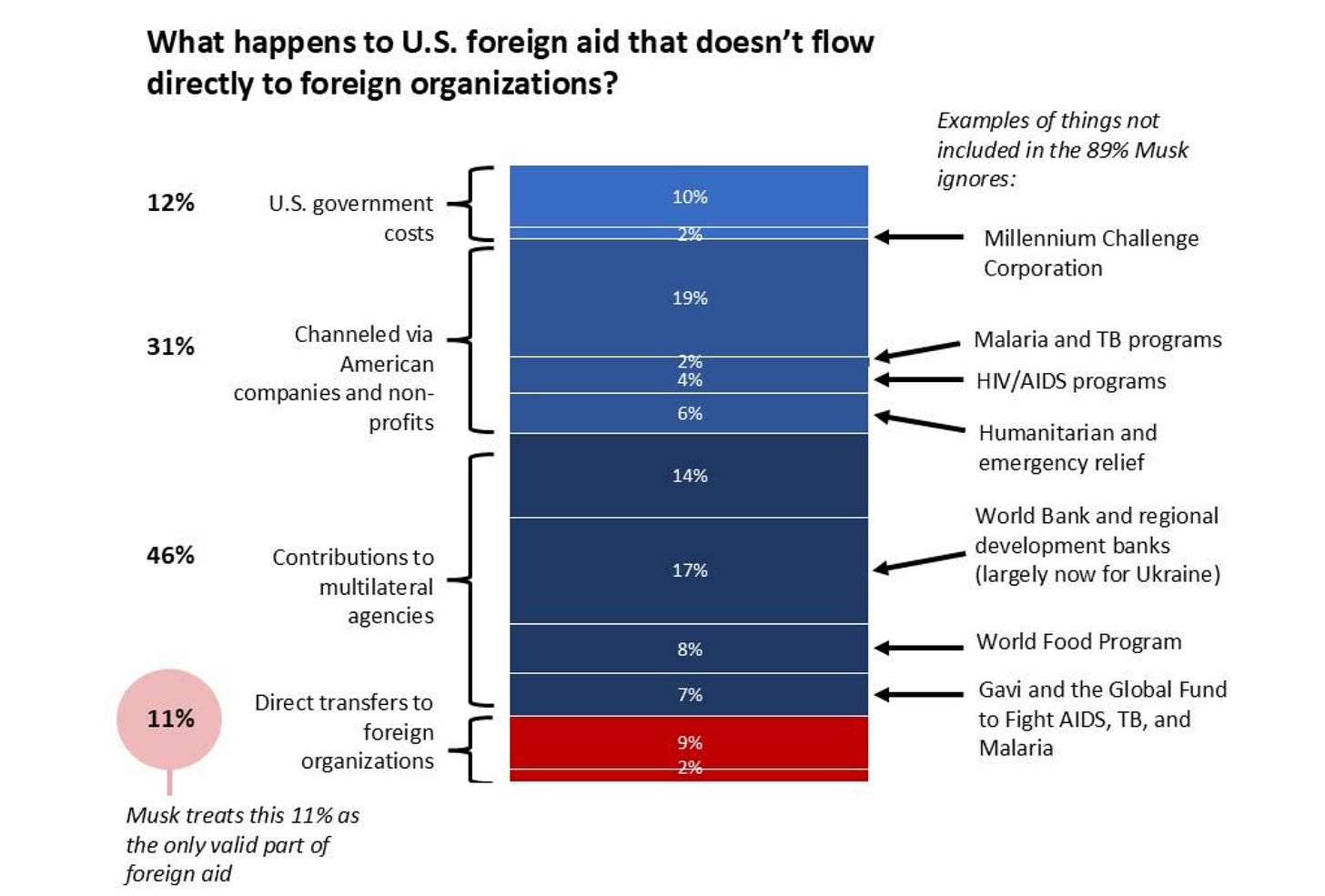
Beyond matters budget, key figures in the Trump administration view foreign aid as an important source of the American establishment’s political power and influence (in addition to being a core tenet of “globalism.”) While there’s certainly a right-leaning conservative Christian base that might be sympathetic to American foreign aid, the core constituency that benefits from USAID’s operations lean left. Politically, it’s virtually costless to scapegoat the aid industry’s army of experts, consultants, program managers, and other professionals. Therefore, there’s an element of sophomoric “owning the establishment” (and especially “the libs”) in the budget cuts/disruptions. The cuts also betray an administration that is very much invested in global projections of American culture wars by publicly attacking specific programming that it doesn’t agree with on cultural grounds.
Overall, there’s little doubt that the Trump administration intends to disrupt every bit of the “development industry” that receives funding from the U.S. government. This will cause enormous pain and disruptions across the Continent. So far it doesn’t appear like African governments have any serious contingency plans in place. They have been living a textbook example of aid dependence. Livelihoods will be lost across multiple sectors. People will die.
The cuts are a painful reminder that aid dependence isn’t a viable development strategy. At a minimum, the entrenched habit of doing development like the region’s countries will always be desperately poor should be a thing of the past. Policymakers and their development partners must seize this moment and pivot in the direction of growth and structural change. Such a transition will be hard. Some countries will fare better than others. But doing nothing or hoping to reconstruct what existed before Trump some time in the future are not good options. The Trump era will inexorably accelerate the ongoing downward trends in development assistance from all official donors. No one will come to the rescue of countries whose ruling elites remain complacent.
II: What sorts of aid do African states receive from the United States?
As I discuss below, the cuts/disruptions have elicited mixed feelings across the Continent. On the one hand, there has been an outpouring of concern over the coming loss of access to life-saving drugs or humanitarian assistance (including food aid). PEPFAR alone has saved millions of lives across the region and supports millions of HIV positive people to live normal lives. Other health and humanitarian programs also remain crucial to keeping people alive across the region. On the other hand, the cuts have sparked debates about aid dependency. For example, many people (including a whole former president!?!) have wondered why African elites continue to allow significant shares of their health budgets to be aid-dependent. A country like Uganda, for example, has upwards of 75% of its health budget funded by donors.
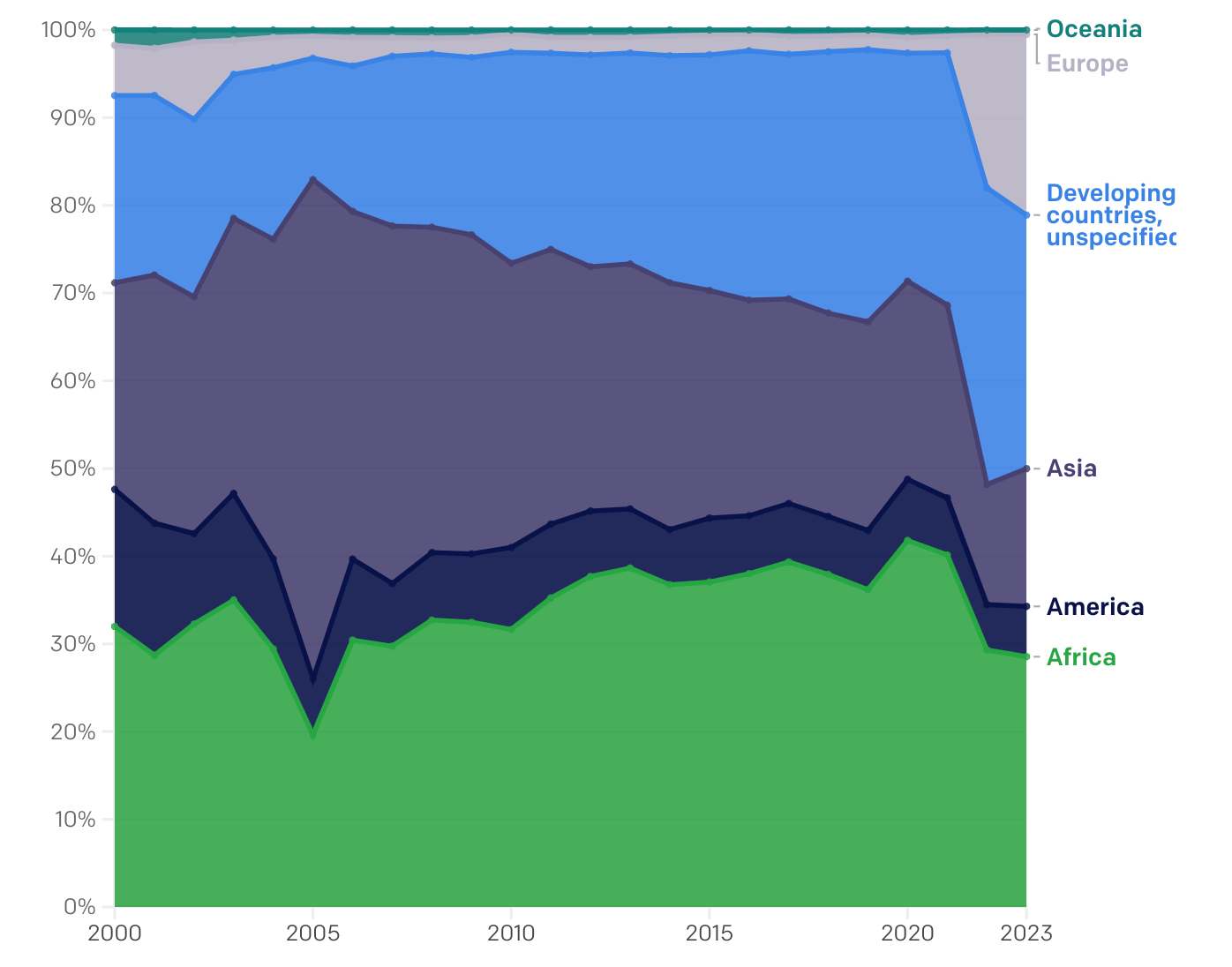
In a typical year African countries receive about 28-32% U.S. foreign aid, which translates to about $11 per capita in allocations. Tied aid and reliance on American implementors keep a good chunk of this stateside. This means that in reality U.S. aid amounts to less than $10 per capita in a typical year. This compares with a regional average per capita government spending of about $471. The share of Africa-specific assistance from the United States has been trending downward in recent years. Since the introduction of PEPFAR, much of American aid tends to be concentrated in healthcare. Most of American aid goes to English-speaking countries in Eastern and Southern Africa and West Africa. In addition to the obvious linguistic connections, the focus on the east and south is partially because countries in these regions were the worst hit by the HIV crisis in the 1990s, and U.S. aid overwhelmingly focuses on health.
Upgrade to paid
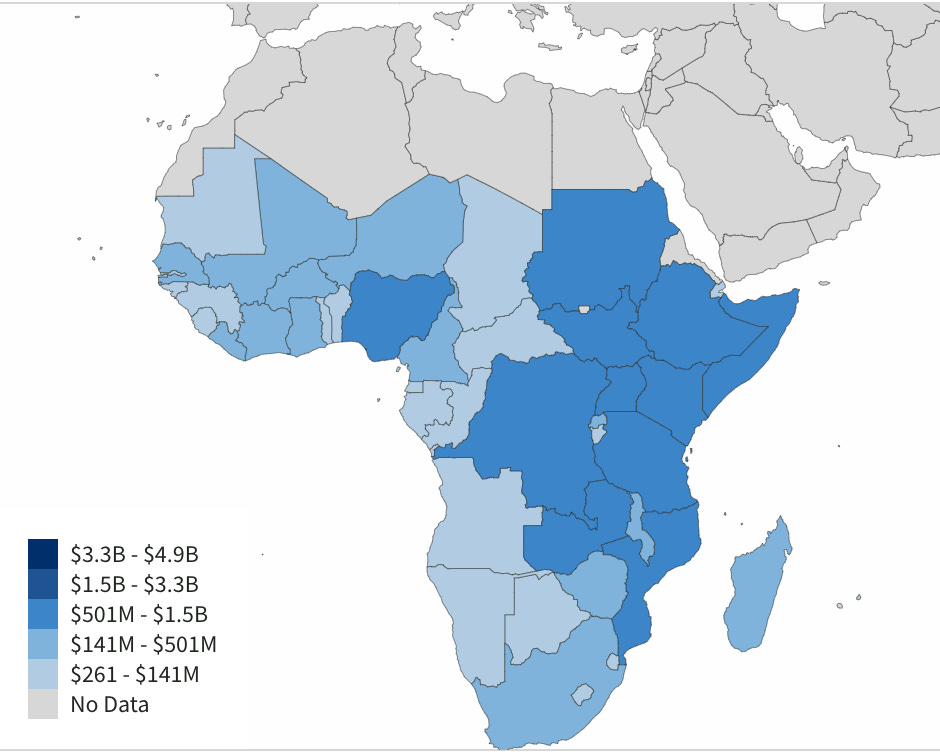
The non-health aid expenditures typically include security cooperation (funding peacekeeping, joint military exercises, and counter-terrorism), development assistance (agriculture, trade promotion, regulatory reforms, market making), and promotion of democracy/good governance. These programs typically receive less then $10m per country project over multiple years. They also usually come with lots of U.S.-based consultancies and agency-driven programming.
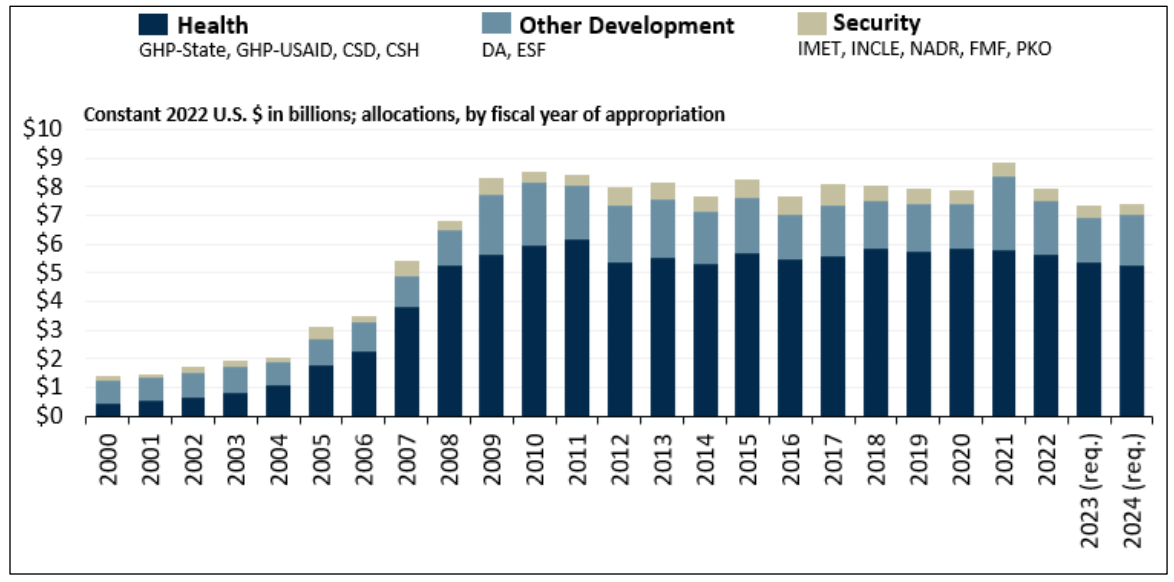
As indicated above, within healthcare by far the biggest share goes to HIV related projects under PEPFAR. But a good chunk of money also goes to tackling diseases like malaria, tuberculosis, and the fight against maternal and infant mortality. While the overall sums are tiny relative to PEPFAR, these are absolutely crucial programs that otherwise go ignored by African governments. I would therefore not be surprised if cessation of USAID activities resulted in an uptick in maternal and infant mortality across several African countries — not just in low-income/post-conflict contexts, but also in otherwise stable lower middle-income countries like Ghana and Kenya.
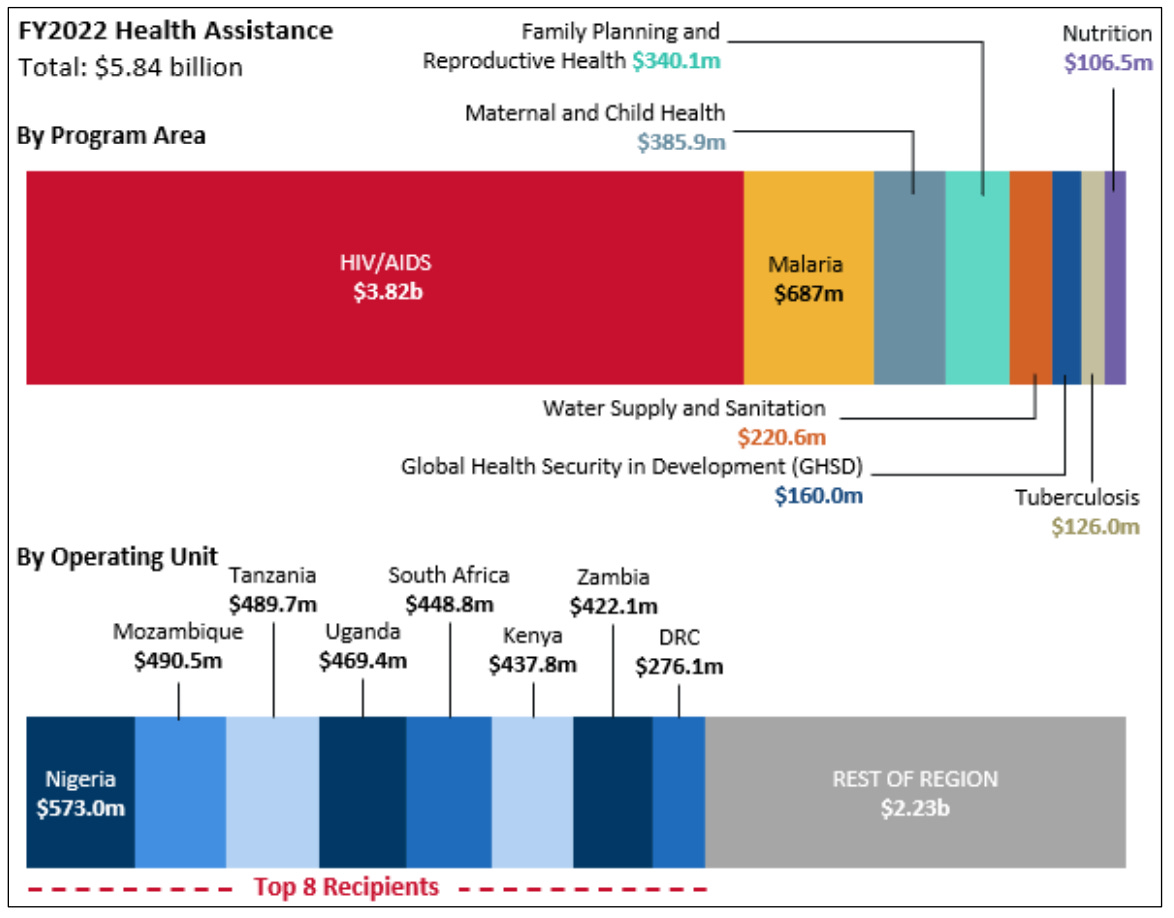
Besides health, education might be the only other sector where a sudden U.S. withdrawal of funds would be acutely felt in some countries. The difference with health, of course, is that only a handful of countries have significant shares of their core education budgets funded by donors. The worst affected will be education systems in weak and fragile post-conflict states. In the dozens of stable countries, education absorbs the largest appropriation in government budgets. In these countries foreign aid mainly funds reform programs and a few school-based program delivery initiatives.
III: Are African countries prepared for the coming permanent cuts?
The simple answer is no. It’s now clear that whatever survives of the U.S. official aid architecture will very likely be barebones, with a good chunk of the administrative and consultant costs that stay stateside cut off. Furthermore, Trump’s team has given hints in the past of introducing smaller non-traditional implementation partners (including by religious organizations), a move that ironically might increase the share of aid that stays stateside as administration costs. I suspect PEPFAR will survive, perhaps in a pared down state. Overall, less money will be flowing to African countries in the form of assistance. And African countries are largely unprepared for this development.
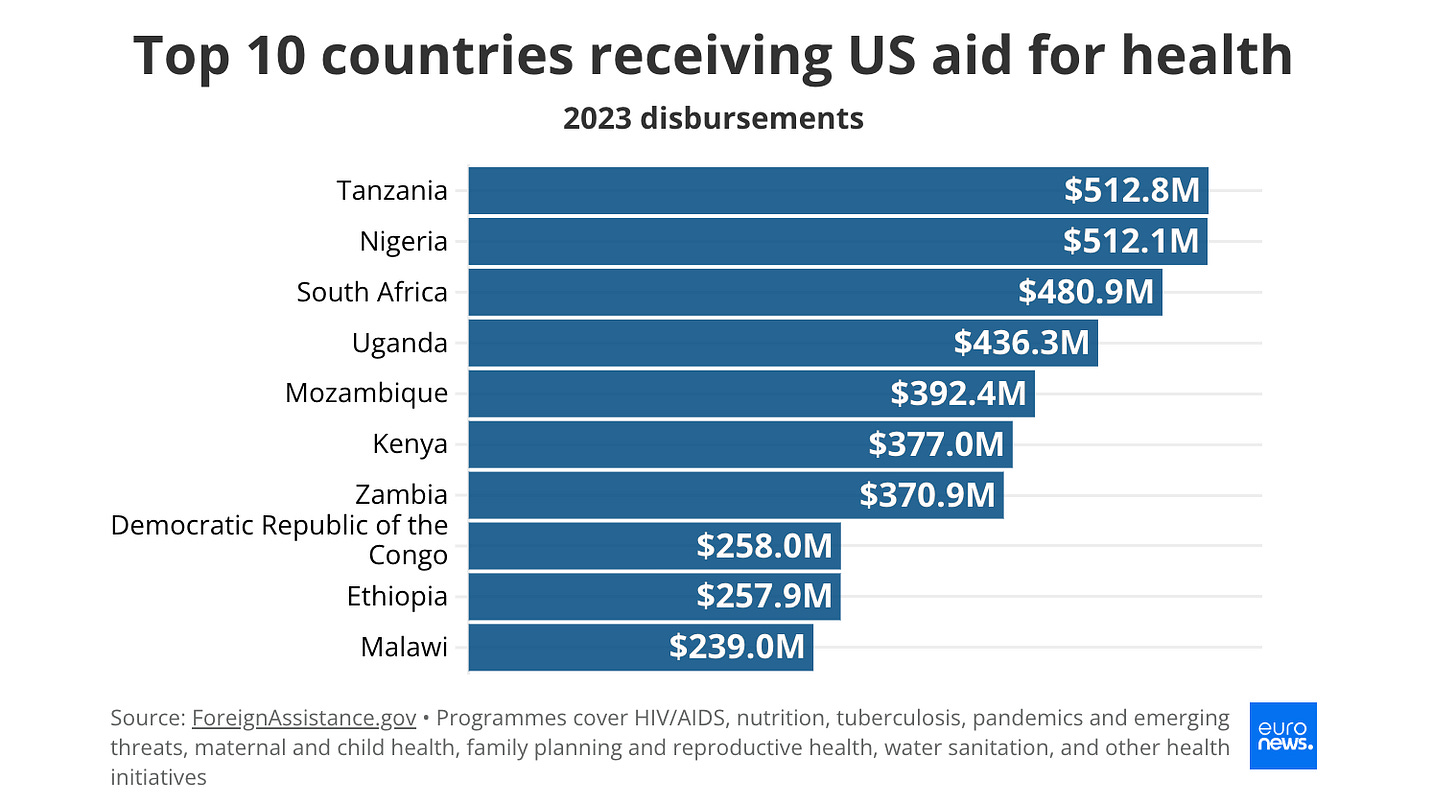
The thing that worries me the most is that the lack of preparedness will turn the clock back on a lot of public health gains. When it comes to international development, no sector has been as successful as public health. Whole diseases have been defeated. Millions of people win against mortality each year. Research continues to advance the fight against mortality to new frontiers. Donor money has been able to set up disease surveillance and response systems in the most difficult of circumstances. And while I would have preferred to see many of these systems better integrated with public health systems, the fact of the matter is that they have worked to save lives. Abruptly gutting them will come with serious consequences for people.
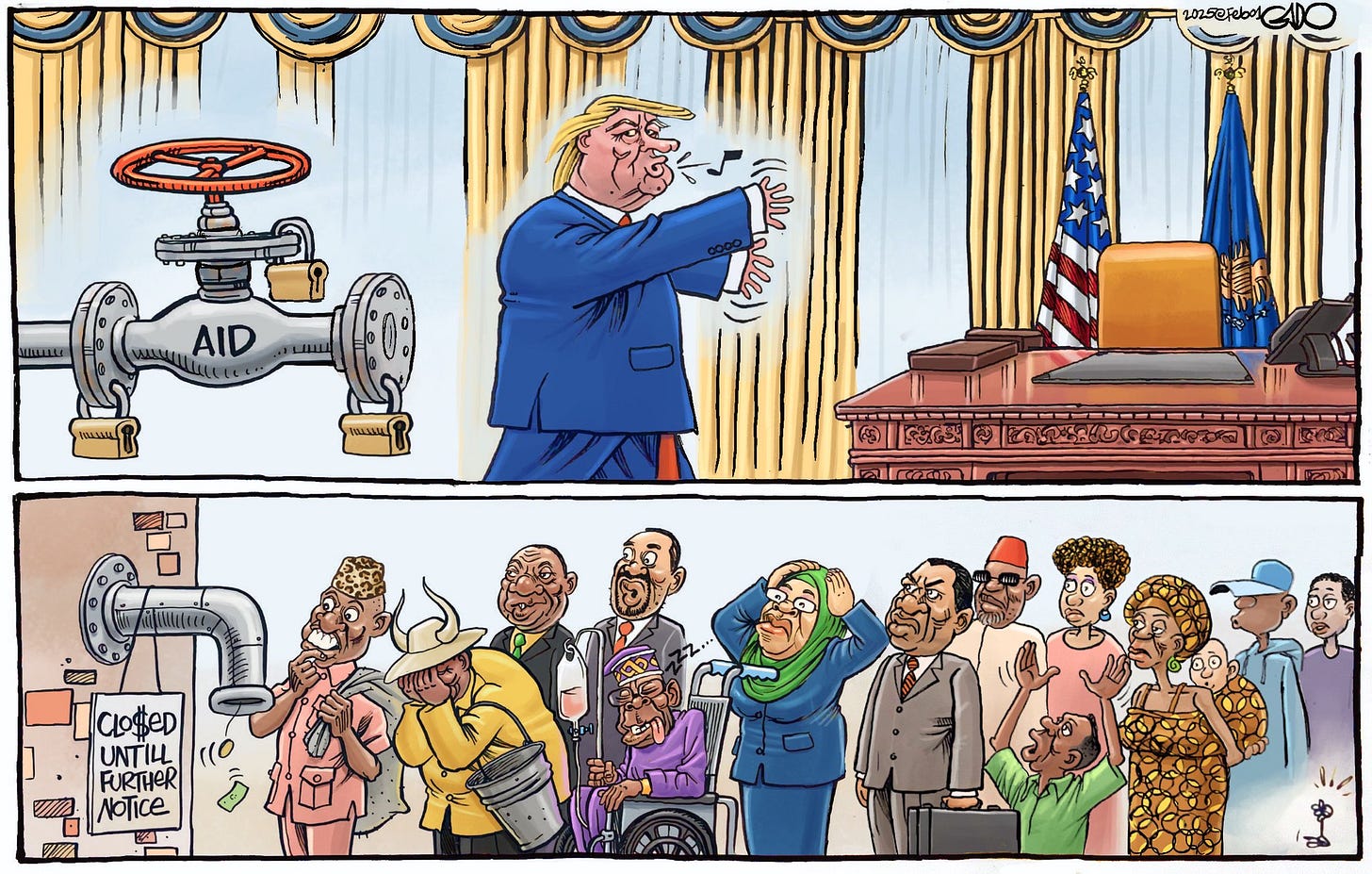
Many African governments actually have bandwidth within their budgets to plug any holes left by the end of U.S. aid (I doubt the number will drop to zero). Take a country like Tanzania. In 2023 U.S. aid obligations amounted to $630m. That comes to about $9.30 per capita (actual amount is lower because of funds that pay for overhead and consultants stateside). Tanzania’s total budget for 2024/25 was $18.94b, which translates to about $281 per capita. Surely, Tanzania should be able to find ways to plug a less than 3.3% budget shortfall should aid from the U.S. completely dry up. Other countries might have a harder time. For example, U.S. aid to Liberia comes to about $31 per capita, against a national budget of barely $150 per capita. Unlike Tanzanians, Liberians will struggle to get the equivalent of 21% of their budget to make up for absent U.S. assistance.
To reiterate, if U.S. aid were to completely stop the biggest problem for many African countries would not come from the loss of funds but from the disruption or collapse of systems of health surveillance and logistics. With serious planning many African countries would certainly be able to make up for the ensuing budget shortfall (many are led by complacent elites, and so won’t). Yet it would be hard to replicate the management of logistics, research, and implementation capacity that has largely been directed or carried out by foreigners over the last several decades. This is not to downplay the hard work of very competent African staffers and health professionals who have actually been at the frontlines of implementation. Rather, it is to acknowledge that, out of sheer complacency, the political class in may African countries would simply collapse the systems were they to be fully in charge. Plus there is the simple fact that adjustment would be messy and take time. And the meantime people would die.
IV: Aid dependence is bad
This is a difficult time in which many dedicated people are scrambling to ensure that the most vulnerable people do not lose their lives; and to cushion those that are losing livelihoods. There is a lot of anxiety and suffering. It might therefore be tempting to avoid difficult conversations about aid dependence. Yet it would be foolish for African policymakers to waste this crisis. Even as they scramble to ensure that lives are not lost, there must be an honest reckoning with the fact that aid dependence is bad and should never be permanent.
Policymakers must be clear-eyed about the fact that the international aid industry will not emerge from the ongoing disruptions intact. It is very likely that global economic turbulence will disrupt aid from other donors besides the United States. With that in mind, it would be irresponsible for African policymakers to continue exposing their citizens to the whims of politicians in donor countries. It would also be irresponsible to not cultivate full ownership of service delivery in sectors that have come to be dominated by donors. In these turbulent times, complacency is not an option. No one will come to the rescue of countries that choose to remain complacent.

